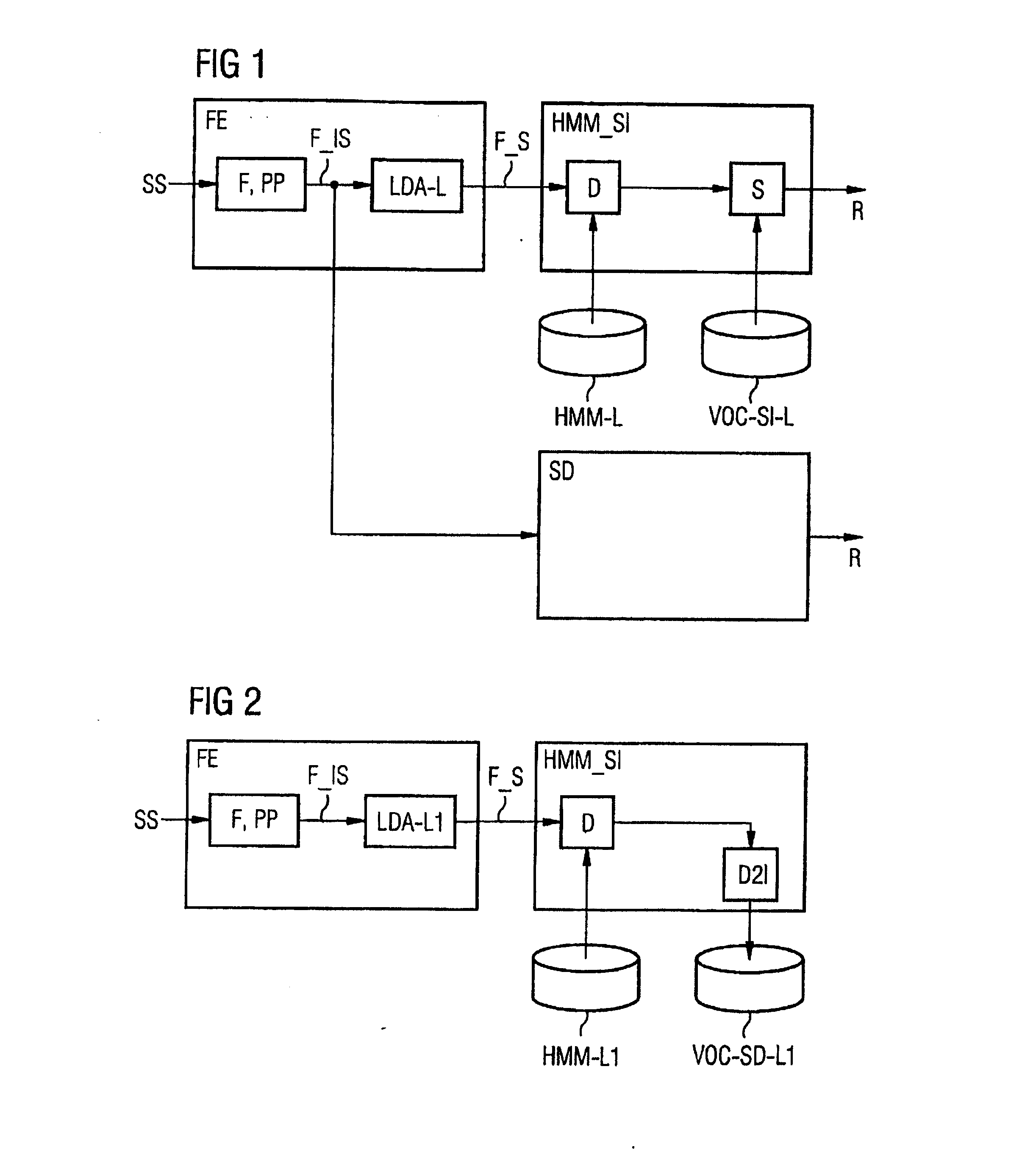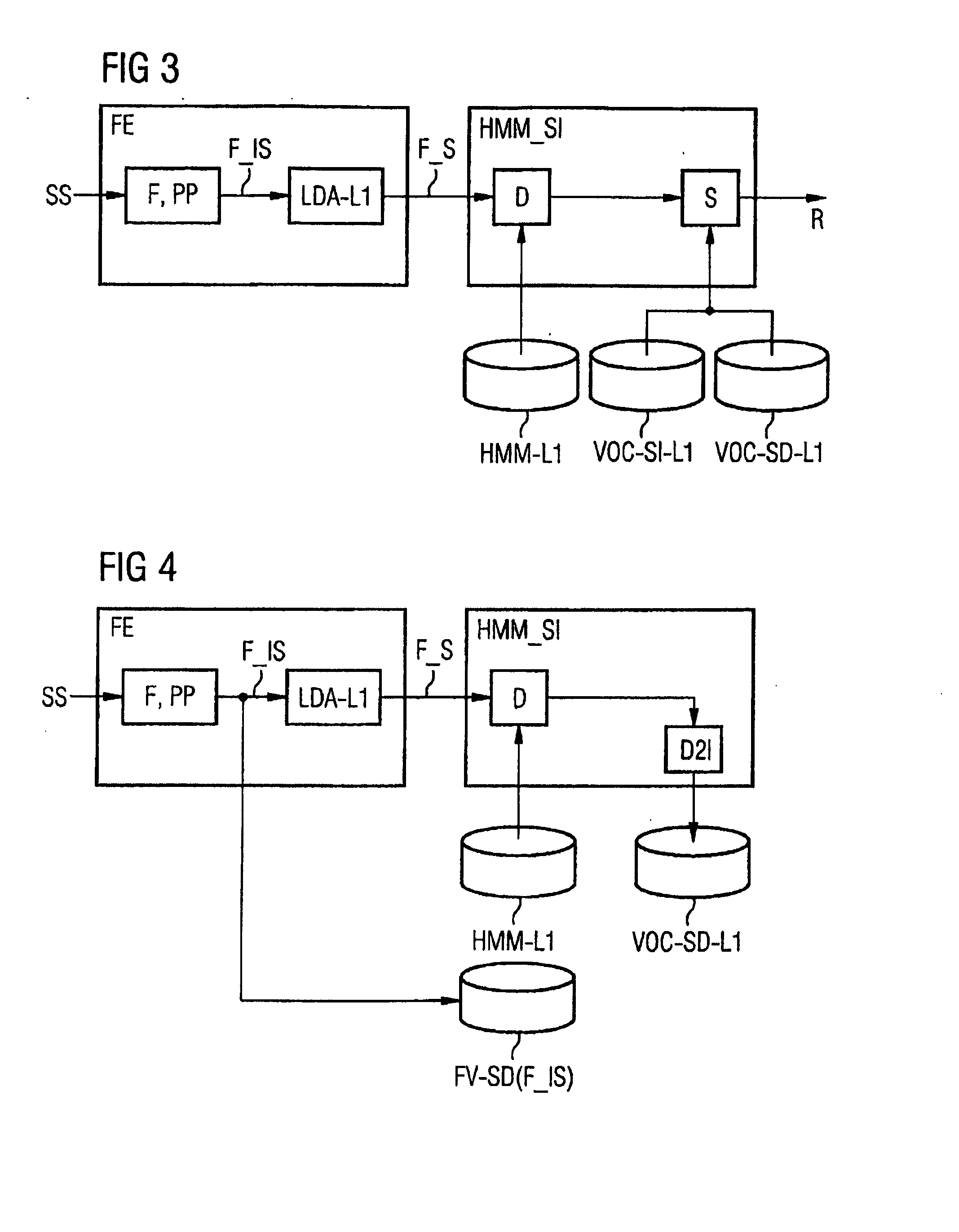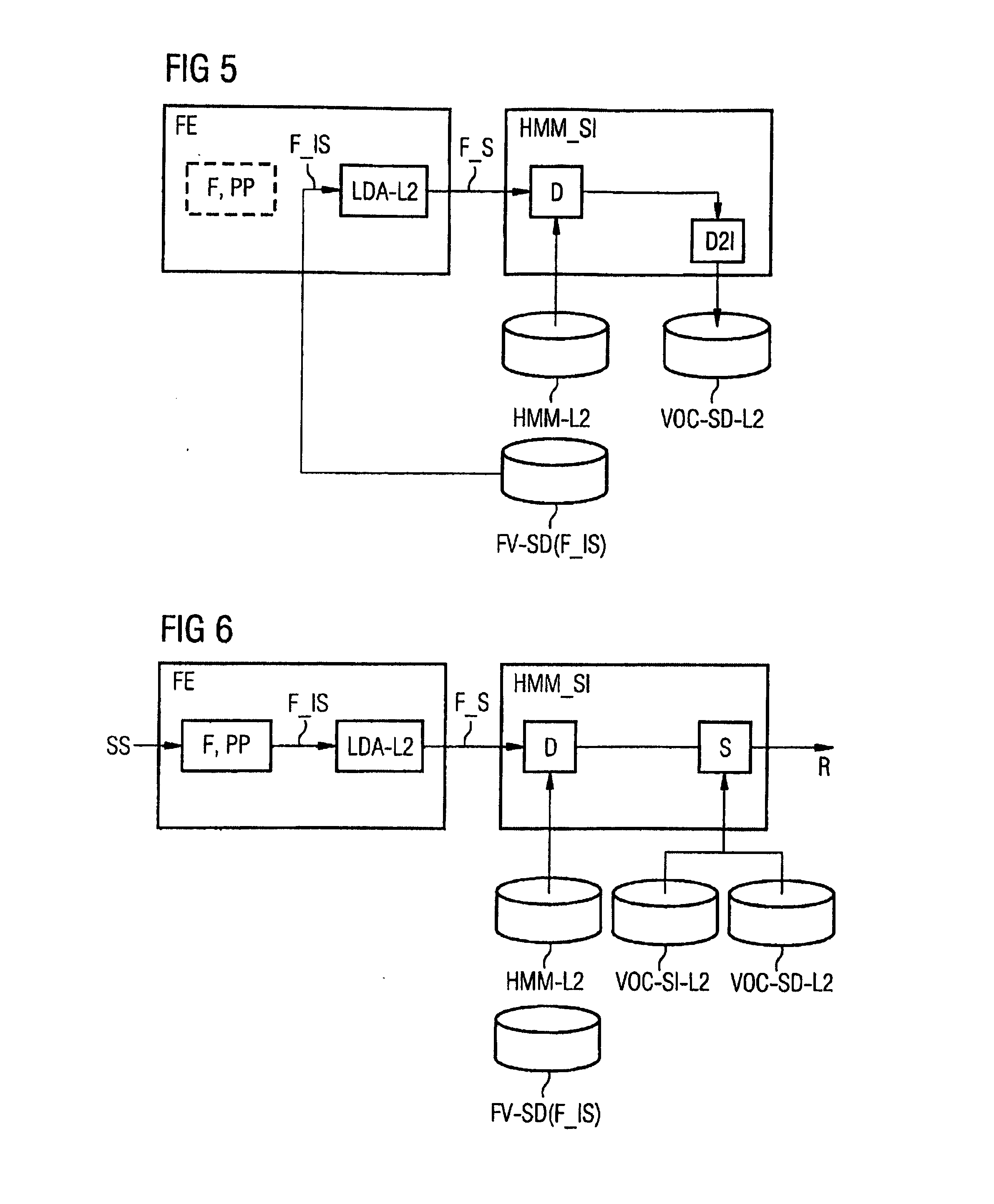Method for speech recognition and communication device
a communication device and speech recognition technology, applied in the field of speech recognition and communication devices, can solve the problems of increasing complexity of communication devices, reducing the required storage space, and reducing the number of features of the feature vector sequence, so as to reduce the required storage spa
- Summary
- Abstract
- Description
- Claims
- Application Information
AI Technical Summary
Benefits of technology
Problems solved by technology
Method used
Image
Examples
Embodiment Construction
[0045] Reference will now be made in detail to the preferred embodiments of the present invention, examples of which are illustrated in the accompanying drawings, wherein like reference numerals refer to like elements throughout.
[0046] For better understanding, some fundamental terms should be explained first. Each language can be divided into phonemes which are specific for the language concerned. Phonemes are sound modules or sounds which offer distinction of meaning. A vowel is an example of such a phoneme. However, a phoneme can also be made up of a plurality of letters and correspond to a single sound, e.g. “sch” or “ch”. Due to the difference between orthography and pronunciation, it is not automatically possible to equate letters and phonemes. In German, for example, the letter “a” can be pronounced long as in the word “Hase” or short as in the word “Hass”. Although the same letter is used in this case, the phonemes are different. Due to the different pronunciations, it is n...
PUM
 Login to View More
Login to View More Abstract
Description
Claims
Application Information
 Login to View More
Login to View More - R&D
- Intellectual Property
- Life Sciences
- Materials
- Tech Scout
- Unparalleled Data Quality
- Higher Quality Content
- 60% Fewer Hallucinations
Browse by: Latest US Patents, China's latest patents, Technical Efficacy Thesaurus, Application Domain, Technology Topic, Popular Technical Reports.
© 2025 PatSnap. All rights reserved.Legal|Privacy policy|Modern Slavery Act Transparency Statement|Sitemap|About US| Contact US: help@patsnap.com



